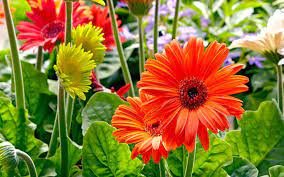**Marigold Flowers and Their Traditional Cultural Significance Across Ethnicities**

Marigold flowers, known for their vibrant colors and rich symbolism, hold profound cultural significance across various ethnicities and indigenous communities around the world. From ancient rituals and ceremonial practices to everyday customs and traditional festivities, marigolds have been woven into the fabric of cultural heritage, serving as symbols of love, prosperity, spirituality, and remembrance. In this exploration of marigold flowers and their traditional cultural significance across ethnicities, we’ll embark on a journey to discover the diverse meanings and rituals associated with this revered botanical treasure.
**1. Indigenous Cultures of the Americas:**
In indigenous cultures of the Americas, marigold flowers have played a central role in religious ceremonies, agricultural rituals, and healing practices for millennia. Among the Aztecs of ancient Mexico, marigolds were revered as sacred flowers associated with the sun god and were used in various religious rituals, including offerings, sacrifices, and festivals. The Aztecs believed that marigolds possessed mystical powers and protective qualities, making them essential elements in spiritual and ceremonial practices.
Similarly, among indigenous communities in North America, marigolds were valued for their medicinal properties and used to treat a wide range of ailments, including wounds, fevers, and digestive disorders. Marigold extracts were also employed in traditional healing ceremonies and rituals to promote physical, emotional, and spiritual well-being, reflecting the interconnectedness of nature, culture, and spirituality in indigenous worldviews.
**2. Asian Cultures and Traditions:**
In many Asian cultures, marigold flowers are revered for their auspicious symbolism and aesthetic beauty, making them integral elements in religious rituals, festive celebrations, and everyday customs. In India, marigolds hold sacred significance in Hinduism and are often used to adorn temples, shrines, and religious idols during ceremonies and festivals. The vibrant colors and aromatic fragrance of marigolds symbolize purity, prosperity, and divine blessings, creating a festive atmosphere and invoking the presence of deities.
In China, marigolds are associated with the Mid-Autumn Festival, a traditional harvest celebration where they are used to decorate homes, streets, and public spaces to symbolize abundance, good fortune, and longevity. Marigold garlands and floral arrangements are also exchanged as gifts and offerings during weddings, birthdays, and other auspicious occasions, signifying joy, happiness, and prosperity for the recipients.
**3. African Cultural Traditions:**
In African cultural traditions, marigold flowers are revered for their spiritual significance and healing properties, playing important roles in rituals, ceremonies, and everyday life. Among various indigenous tribes and communities, marigolds are used in divination practices, spiritual cleansings, and ancestral worship to invoke protection, guidance, and blessings from the spirit world.
In West Africa, marigold flowers are associated with the Yoruba deity Oshun, the goddess of love, fertility, and prosperity, and are used in offerings and ceremonies dedicated to her worship. Marigold petals are also scattered along pathways and doorsteps as offerings to ancestors and spirits, creating a sacred space and fostering spiritual connections with the divine.
**4. European Folklore and Traditions:**
In European folklore and traditions, marigold flowers have been revered for their protective qualities, decorative charm, and medicinal properties, influencing various customs, superstitions, and cultural practices. In medieval Europe, marigolds were planted around homes, gardens, and sacred spaces to ward off evil spirits, protect against witchcraft, and ensure the safety and well-being of the inhabitants.
Marigold flowers were also used in May Day celebrations, where they were woven into garlands, wreaths, and crowns as symbols of fertility, abundance, and prosperity. Additionally, marigold petals were scattered along church aisles and procession routes during religious festivals and processions, symbolizing purity, devotion, and divine blessings.
**5. Indigenous Australian Cultures:**
In indigenous Australian cultures, marigold flowers are revered for their medicinal properties and spiritual significance, serving as symbols of healing, protection, and connection to the land. Among Aboriginal tribes and communities, marigolds are used in traditional healing ceremonies and rituals to treat various ailments, including skin conditions, infections, and digestive disorders.
Marigold flowers are also used in cultural practices such as bush medicine, where they are brewed into teas, poultices, and ointments for their therapeutic benefits. Additionally, marigolds are incorporated into storytelling, song, and dance as symbols of resilience, wisdom, and cultural identity, reflecting the enduring relationship between indigenous peoples and the natural world.
**Conclusion:**
In conclusion, marigold flowers hold profound cultural significance across ethnicities and indigenous communities worldwide, serving as symbols of spirituality, prosperity, healing, and remembrance. From ancient rituals and ceremonial practices to everyday customs and festive celebrations, marigolds continue to enrich cultural traditions and strengthen cultural identity, reflecting the timeless wisdom and universal truths they embody. As we celebrate the diversity and richness of cultural heritage, let us honor the enduring legacy of marigold flowers and the profound meanings they hold for people of all backgrounds and walks of life.


